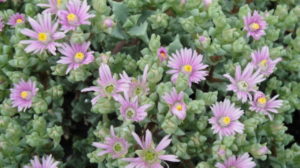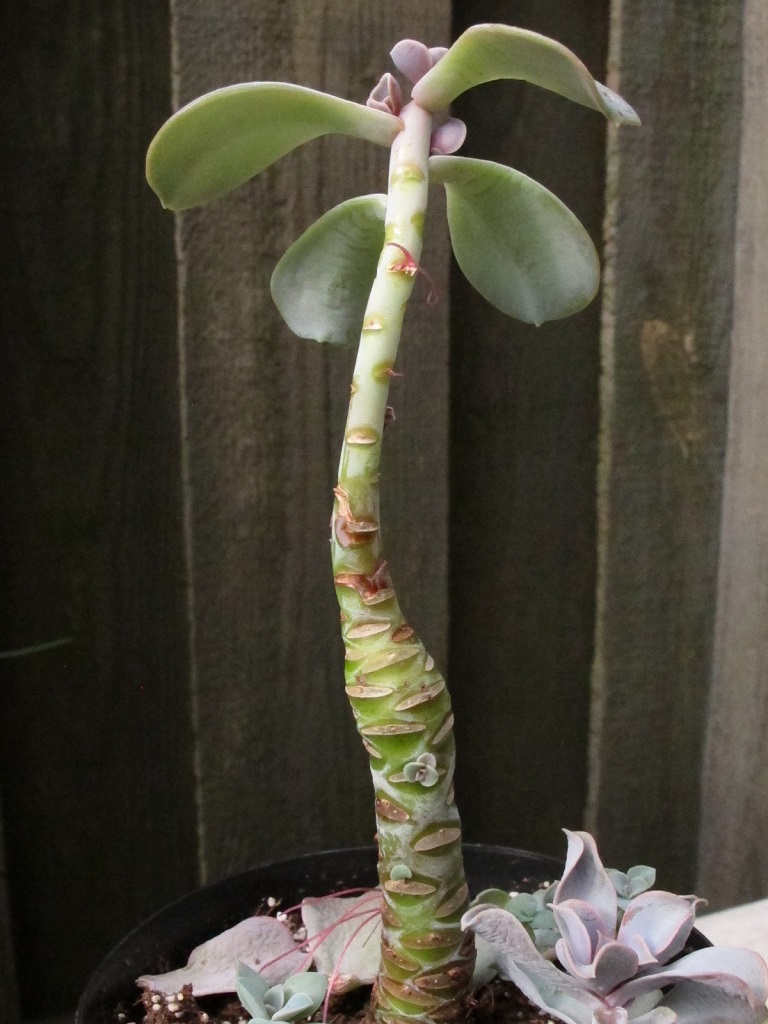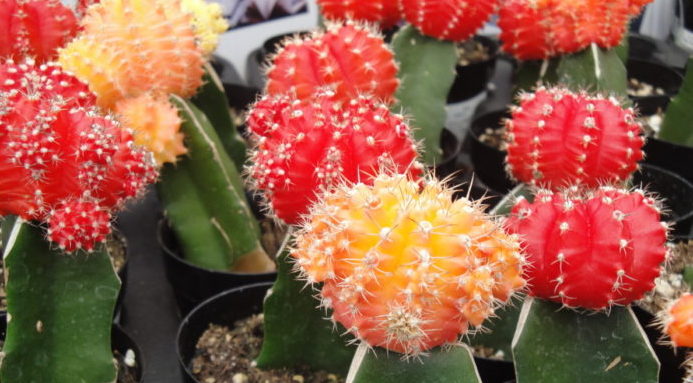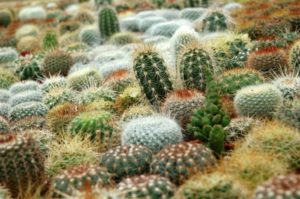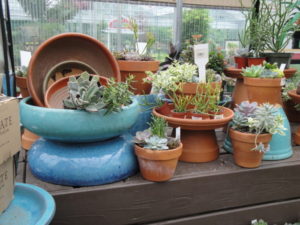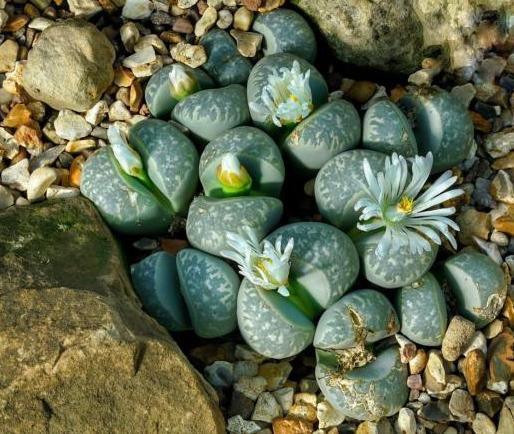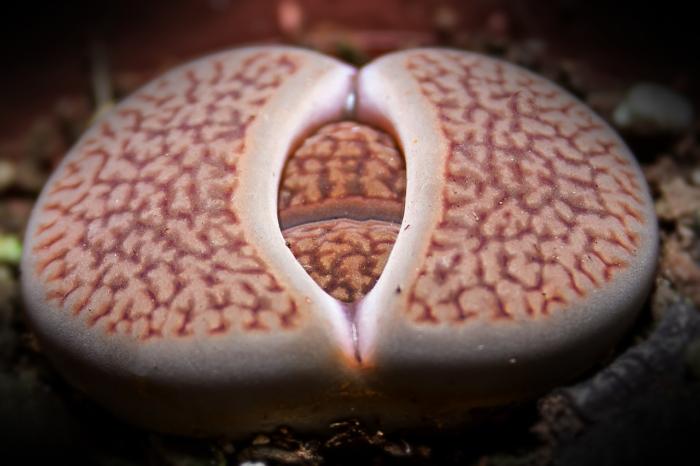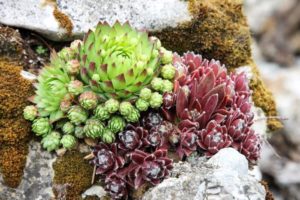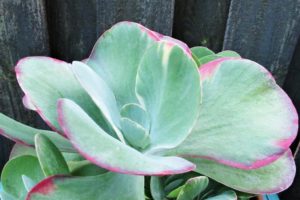Speaking Of Succulents
Earlier today, I gave a presentation on succulents at the annual meeting for the Charlotte (NC) Council of Garden Clubs. We spent a few hours at Southern Gourmet in Matthews, and, with their help, and someone else’s laptop, I was able to get through all the pictures. Thank you, CCGC, for the invitation.
What Is A Succulent?
Succulents, by definition, are plants that store water in their leaves, stems, and roots. They evolved in arid regions (primarily in the Americas, Africa, and Australia), and can endure intense sunlight and prolonged drought and heat. By providing favorable conditions, we can grow colorful succulents in sunny windows. Over the past several years, they have been enjoying a resurgence in popularity.
Decades ago, I purchased young bare-root succulents from a California wholesaler for my horticultural business. Unwrapping each little parcel was like waking up on Christmas morning as a child. These were plants I’d never seen before—Titanopsis, Pleiospilos, Graptopetalum, Lapidaria—and were destined for sale at the Westover Flea Market when I lived in nearby Morgantown, West Virginia.
Although there are many species of hardy succulents in the Sedum and Sempervivum genera, this article addresses primarily the tender succulents, which require temperatures above freezing.
Plenty Of Light For Succulents
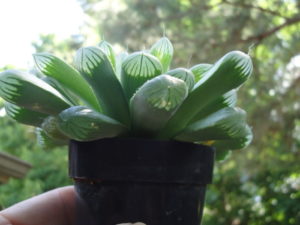
Haworthia cooperi showing leaftip windows. Light refracts inside the leaf, even if the plant is almost buried in desert sand.
Adequate light is one of those conditions that must be met for these plants to show good color and characteristic form. Some succulents, such as Haworthia, Gasteria, Aloe, Epiphyllum, and Christmas cacti, grow well with at least 4 hours of direct sun, and very bright indirect light the rest of the day.
Crassula, Echeveria, Euphorbia, and Sedum appreciate even more light, at least 5 or 6 hours.
Cacti (succulents with spines or thorns), living stones, and Sempervivum (Hens and Chicks) need abundant sunshine, at least 6, but preferably 8, hours per day.
Direct sunlight keeps the plants colorful and compact. If the plants receive enough sunlight most of the time, they will tolerate the occasional stretch of cloudy weather without deteriorating.
Artificial light helps during the short days of winter or when the sun refuses to shine. When necessary, I use 2-tube 4′ long shop lights with “daylight” LED or fluorescent tubes. Be sure to place the plants within a few inches of the tubes for at least 16 hours per day.
When Light Is Insufficient
- Outgrowing the rosette. Both photos demonstrate internode stretch.
- Thin stem of Graptopetalum variety.
How do you know when your succulents are not receiving enough light? Plants that grow in the shape of a rosette start growing faster (photo above, left). The center leaves outgrow the outline of the plant, stretching toward the light. And the new part of the stem grows thinner. That happens when winter sunlight is scarce, as in this Graptopetalum pentandrum ‘Superbum’ (photo above, right).
In poor light, strong colors begin to pale, and purple, red, or orange highlights fade. New leaves become thinner. The internodes (stem segments between the nodes, where leaves are attached) on younger parts of the plant will lengthen (photos, above); this appearance is diagnostic for low light levels.
There’s a huge difference between “direct sunlight” and “bright indirect light”. A few hours of indirect light offers very little benefit to succulents; they need the strong sun. And, without adequate light, succulents are more susceptible to damage from overwatering.
More Sun For Cacti
- Bumble bee collecting nectar.
- Grafted cacti.
Cacti also suffer in inadequate sunlight. The spines on new growth grow farther apart.
In upright species, the stem becomes narrower relative to the older part that was growing in good sun. If you see that the top half of a cactus stem is thinner than the bottom half, and the spines are not as closely clustered, the plant is not getting as much sun as it was before. Solution? More sun!
The colorful tops of grafted cacti (photo, above right) lack chlorophyll, and depend on the green stock plant for sustenance. Also, the graft is more sensitive to harsh sun and should be placed in cooler morning sun.
Light And Water
Light and water are inextricably linked in plants. When the sun doesn’t shine, photosynthesis, transpiration, and respiration slow down, and soil moisture sits unused around the root system. Play it safe and water succulents only on sunny mornings and when the forecast calls for sunny weather for the next couple of days.
Under normal conditions, allow the soil to dry completely before watering again. Although the soil feels dry on the surface, there’s usually some moisture in the lower half of the root ball.
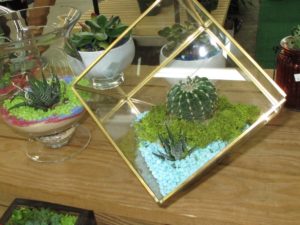
Glass container with two open sides.
These plants never need misting. Water that sits on the foliage can initiate rot, so shake it off or use a towel to dry it. Never let succulents sit in a saucer of water.
Although glass terrariums are very popular, I do not recommend succulents for terrariums. Unless the glass container has large openings for heat to escape (photo, above), succulents in direct sun will fry in terrariums! They also rot in high humidity or if there’s the slightest amount of excess water in the soil.
Pots
Succulents prefer to remain quite potbound, where roots are tightly packed in the pot. Plants in oversized pots are more likely to be damaged by overwatering simply because the greater soil volume holds more water for a longer period of time.
Shallow glazed containers, such as decorative bowls and ceramic bonsai trays, make delightful homes for succulent combinations (photo, below). Include rocks, gravel, and driftwood in these dish gardens to create a natural-looking scene from nature.
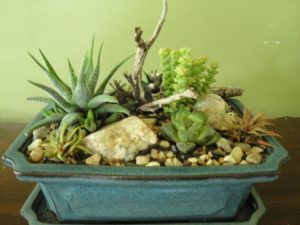
Small-growing succulents in a bonsai tray.
Tall glazed pots hold a reservoir of water that probably won’t be used by the plant. More appropriate for succulents, terra cotta (Italian for “baked earth”) pots are porous and help the soil dry faster when water vapor passes through the sides.
Repotting, if needed, should be done early in the growing season so a strong root system can develop before the days begin to shorten in autumn. Growth slows during those months. Always use pots that have drainage holes.
Potting Soil
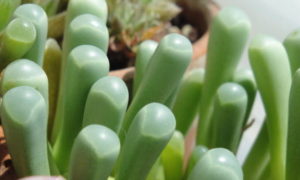
Fenestraria species showing leaftip windows.
The soil used for succulents should be gritty for quick drainage. If needed, amend regular potting soil with perlite, coarse sand, horticultural grit, pine fines, charcoal, expanded rock, or PermaTill. “Cactus and Succulent” soil is available, although quality varies widely among brands.
When repotting, all new soil goes below and around the sides of the root ball, never on top of it. Planting too low in the soil results in rotten leaves and stems.
In their natural environment, certain succulents, such as Haworthia, Aloe, and Gasteria, have contractile roots. If blowing sand exposes the crown or the top of the root system, the roots are able to “pull” the plant lower into the soil. Amazing!
Living Stones
The ground-hugging living stones, or split-rock, succulents (photos, below) are extremely sensitive to overwatering. Use small clay pots and very gritty, gravelly soil. There should be only a very small percentage of organic matter in the soil.
These plants are well-camouflaged in their native southern Africa, almost indiscernible from the rocks around them. Some of the genera available for purchase include Lithops, Lapidaria, Gibbaeum, and Conophytum.
- Living stones.
- Flowers emerging from between the leaf pairs, left. New leaves “splitting” last year’s foliage, which will wither, right.
Fertilizer
Succulents grow slowly, so fertilize only 2 or 3 times during the growing season, from March through October.
Use products formulated for indoor houseplants, with small numbers on the package, such as 8-8-8 or 10-10-10. Those three numbers represent the amounts of nitrogen, phosphorus (phosphate), and potassium (potash) in the product. All products list these three primary macronutrients on the label in that order: N-P-K.
It’s better to underfertilize than to overfertilize, so use a more diluted rate than the recommendation on the label. For succulents, dilute it to half-strength.
Lithops and other living stones are extremely slow-growing, so they’re hardly ever fertilized. Use a very dilute higher phosphorus fertilizer only when the plant shows new growth.
Outdoors For The Summer
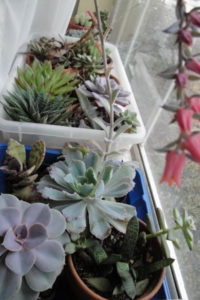
Light blue Echeveria in bloom.
Succulents summering outdoors benefit from higher light levels and often take on vibrant coloration. Jade plants (Crassula) develop red margins on their leaves in brighter sun, and Echeveria becomes even more colorful.
Monitor closely during periods of high heat. Above 85° F, provide light shade during the hot afternoon hours. Potted plants are more susceptible to stress from extreme conditions than those planted in the ground.
Transition your plants to outdoor conditions gradually. Give them just a couple of hours of early morning sun or dappled shade for the first few days. A plant that was growing indoors all winter will probably suffer sun scald if immediately placed outdoors in full sun. This hardening off process gives plant tissues time to toughen up so they can withstand more intense summer sun. Sunlight causes the cuticle, a protective waxy layer on the leaf surface, to thicken.
This beautiful variegated succulent, called Kalanchoe ‘Fantastic’, has a variably feathered band of cream between the pink edge and the greenish-gray base of the leaf (photo, below). I’ve had this plant for over a decade, and protect it from dropping temperatures in autumn by moving it indoors well before frost. Stronger sun and more stressful conditions might cause it to turn redder in color. It recovers, though, in less extreme conditions.
Protect your plants from excessive moisture. After receiving some rain, place the dampened succulents under cover. Check to make sure the drainage hole allows water to drain freely.
And Back Inside In Autumn
As autumn temperatures fall into the high 40’s at night, it’s time to bring your plants indoors for the winter. The more sensitive types, including Echeveria and Graptopetalum, come indoors before the thermometer drops below 55°. Prolonged exposure to cold, wet conditions will cause succulents to deteriorate, so check the forecast!
Pruning Succulents
If your plants are growing too large and cannot be accommodated in the space available, consider cutting them back. Stretched-out plants benefit from selective pruning in early summer. New growth will soon emerge.
Cacti can be temperamental, so be careful if you choose to lop off the tops. For cacti, this is best done in late spring/early summer for a full season of recuperation. Stronger light available in the summer causes the plant to respond with more compact growth. They might grow a few new stems below the cut.
During transpiration, water is “pulled” through the plant’s vascular system from the roots, to the stems, and then through the leaves and out to the atmosphere. This process is the primary manner in which moisture is removed from the soil. Therefore, avoid extensive pruning if any plant was recently watered. Because there’s less foliage on the plant after pruning, the soil stays moist for a longer period of time. Wait a few days, or until the soil is almost dry, before pruning.
Headings
Page 1: Speaking Of Succulents, What Is A Succulent?, Plenty Of Light For Succulents (When Light Is Insufficient), More Sun For Cacti, Light And Water, Pots, Potting Soil (Living Stones), Fertilizer, Outdoors For The Summer (And Back Inside In Autumn), Pruning Succulents
Page 2: Propagation Of Succulents (Rooting Cuttings, Stem Cuttings, Leaf Cuttings, Division, Seed), Root Rot And Insects (Root Or Stem Rot, Insects and Mites), Flowers, Time To Grow That Collection!
